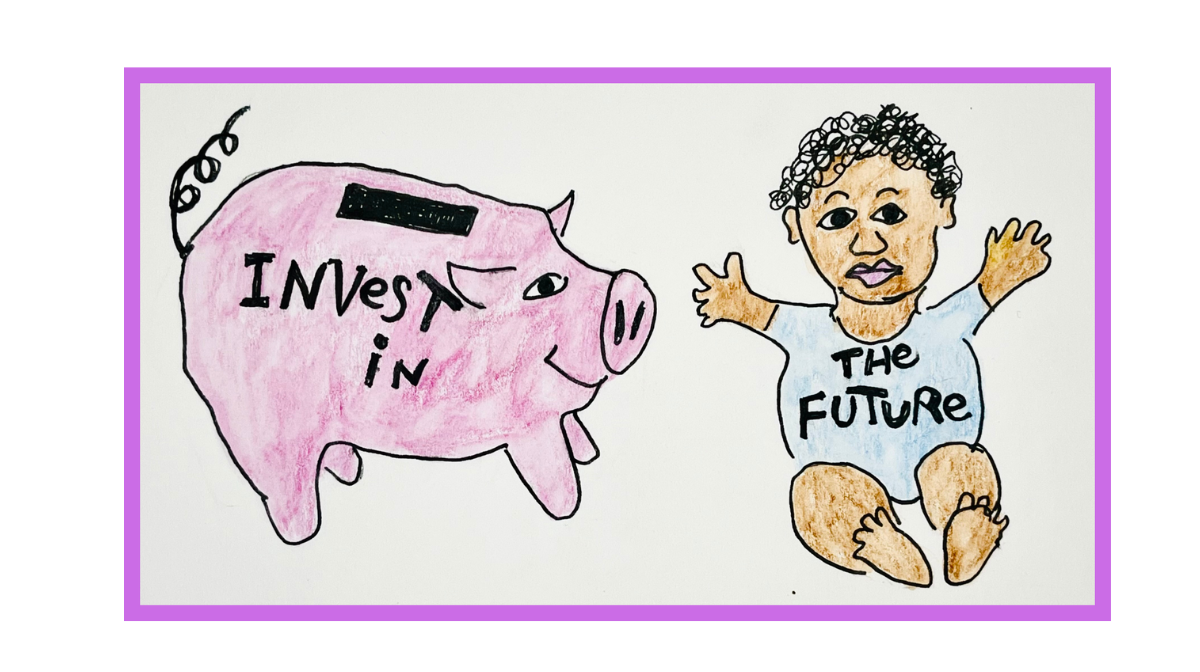Capital for the Kids
Nancy Folbre
4 April 2024A quick look at small moves toward a guaranteed basic income for kids in the U.S. and Canada.

Take note and pay heed: Flint, Michigan, one of the poorest cities in the country, tortured by deindustrialization, its water supply poisoned by poorly maintained lead pipes, with a predominantly Black population, has designed a demonstration project for the rest of us — a universal cash program for babies.
It’s called Rx Kids, and it’s a great prescription for financial medicine, giving all resident mothers $1,500 while they are pregnant and $500 per month for the first year of their child’s life. I wouldn’t call it a guaranteed basic income, because it only covers the very young, but it’s definitely a guaranteed better start. It’s not a pilot program, but a public policy that will, hopefully, be permanent.
Obviously, it costs a lot of money, but the total payoffs (“return on investment”) are estimated to be ten times as great. Since that’s a big number, I looked into the details, and found that they are documented with mind-numbing diligence in a paper published in the Journal of Benefit-Cost Analysis. Here’s a list of some components in the calculation: increased future earnings and tax payments by children, avoided expenditures on children’s and parents’ health care, avoided expenditures on foster care, avoided expenditures and victim costs of crime. The actual estimates are derived from statistical analysis of the economic impact of similar transfers.
In Northern Europe, the concept of a guaranteed income for children is uncontroversial, taking the form of universal family allowances. Less well-known is the Canadian family allowance, expanded in 2016, and credited for a resulting decline in child poverty rates in that country. Today, the Canadian Child Benefit, indexed for inflation amounts to as much as $5,503 U.S. dollars per child under the age of 6 (the amount is phased down for families with high incomes).
In 2021, in the aftermath of the Covid pandemic, the Canadian example helped motivate Democratic support for expansion of the U.S. Child Tax Credit—then at the low level of a maximum of $2,000 per child and excluding many low-income families from full eligibility. That year, the Wall Street Journal headlined “Universal Basic Income May be Coming for Kids.” And it sort of did—temporarily. Eligibility was expanded and the top benefit for children under 6 was hiked to $3,600. Child poverty declined to a record low of 5.2%. However, Congress declined to extend the legislation, and the Credit reverted to its previous level.
The only real action on capital for kids is taking place on the local level. While universal basic income programs don’t always provide specific benefits for children, they obviously benefit parents. According to a recent feature on National Public Radio, more than 150 guaranteed income pilot programs have been initiated around the country, designed to increase the “evidence base” for this policy.
A recent report based on interviews with participants in this pilots in Atlanta, Birmingham, Louisville and Shreveport documented how receiving a guaranteed income “radiated through their family’s lives,” reducing economic stress and allowing them to spend more time with their children.
As one mom put it,
It’s helping me become a better person, a better parent, I think, just in general. It gave me hope… My kids, they deserve the world. They deserve the world. And when something so small, the 25 cents piece of candy, I can’t afford it, it breaks my heart to have to tell them no… But now, I’m able to say yes more, and they’re more excited… So, it gave them hope, too.
The cover picture is designed by Nancy Folbre
This work is licensed under a Creative Commons Attribution-NonCommercial-NoDerivatives 4.0 International License.